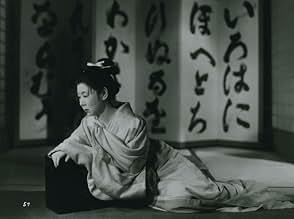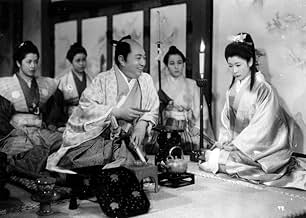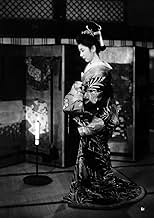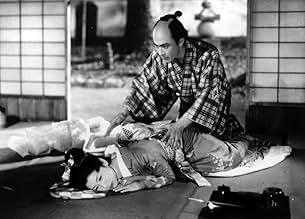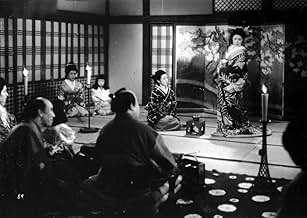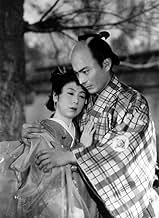NOTE IMDb
8,1/10
7,9 k
MA NOTE
Ce film retrace les combats et la survie d'une femme au milieu des vicissitudes de la vie et de la cruauté de la société.Ce film retrace les combats et la survie d'une femme au milieu des vicissitudes de la vie et de la cruauté de la société.Ce film retrace les combats et la survie d'une femme au milieu des vicissitudes de la vie et de la cruauté de la société.
- Récompenses
- 2 victoires et 1 nomination au total
Akira Oizumi
- Manager Bunkichi
- (as Hiroshi Oizumi)
Histoire
Le saviez-vous
- AnecdotesThis film, which was director Kenji Mizoguchi's dream project, was severely under-financed, and the production was forced to use a warehouse instead of a regular sound stage. This warehouse happened to be located near railways, and each time a train passed by, they had to stop shooting, which made the shooting of the film even more difficult with the director's obsessive use of long, continuous, uninterrupted takes. The same warehouse was also used for Josef Von Sternberg's film 'The Saga of Anatahan'.
- Citations
Katsunosuke: Lady Oharu, a human being - no, woman - can only be happy if she marries for love. Rank and money don't mean happiness.
- Crédits fousOpening credits shown over Japanese artwork/water-colors.
- ConnexionsFeatured in Écoute voir... (1978)
Commentaire à la une
Kenji Mizoguchi's stunning masterpiece is a heartbreaking tale of purity in a world of corruption. Based on a seventeenth-century novel by Saikaku Ihara called The Woman Who Loved Love, the film tells the story of Oharu, a young woman who in her younger days worked as a lady-in-waiting at the Imperial Palace of Kyoto, but having fallen in love with a man below her rank is expelled from the palace, and she and her parents are forced to live in exile. Try as she might to find love in her relationships, she is constantly thwarted by her society's low expectations for a woman's heart and her father's ambitions for respectability, and soon descends to being a concubine, later a streetwalking prostitute. Mizoguchi's tones are so gentle and poetic that every frame works its way into your heart, and in such a delicate manner. Kinuyo Tanaka's performance as Oharu is beautiful as well, abandoning the melodramatic gestures common to Japanese film acting and going straight for the heart. Sumptuous production design and a decidedly feminist message make a film well worth seeing.
Meilleurs choix
Connectez-vous pour évaluer et suivre la liste de favoris afin de recevoir des recommandations personnalisées
- How long is The Life of Oharu?Alimenté par Alexa
Détails
Box-office
- Montant brut mondial
- 6 921 $US
- Durée2 heures 28 minutes
- Couleur
- Mixage
- Rapport de forme
- 1.37 : 1
Contribuer à cette page
Suggérer une modification ou ajouter du contenu manquant

Lacune principale
By what name was La vie d'O'Haru femme galante (1952) officially released in India in English?
Répondre
